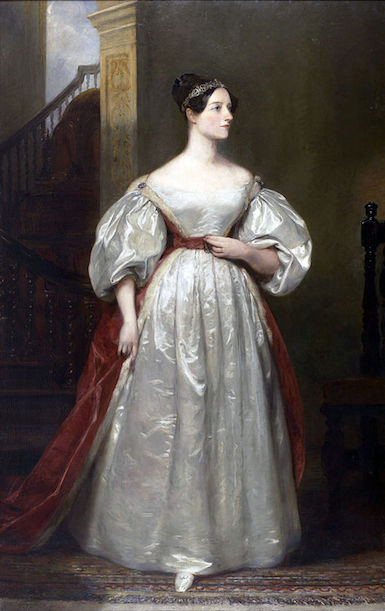[ad_1]

Margaret Sarah Carpenter, Portrait of Ada Lovelace (1815-1852), 1836, oil on canvas. Lovelace is often credited with creating some of the first designs for computers.
VIA WIKIMEDIA COMMONS
Making History
At a protest last night, 250 University of North Carolina students toppled and defaced a Confederate statue known as Silent Sam. Chants of “I believe that we will win” were reportedly heard at the event. [CNN]
Christie’s is set to sell its first AI-generated work—a portrait of a fictional man named Edmond Belamy by the collective Obvious. It’s expected to bring in somewhere between $7,000 and $10,000. [Christie’s]
Lives
The painter Charles Blackman, a Melbourne-based member of the Antipodeans group, has died at age 90. Historians have considered him one of the most important Australian postwar artists. [The Guardian]
Returns
New York’s School of Visual Arts has named new department chairs for the 2018–19 academic year. Christopher J. Cyphers will now be provost, making this the second time he’s served in the role at SVA. [Artforum]
After having canceled its satellite fairs last year because of an earthquake, Zona Maco’s Mexico City editions will return this month. The fair has seen increased attendance in recent years, and higher-ups are hopeful that a good number of people will attend these satellite editions as well. [The Art Newspaper]
Collecting
Artist Fred Tomaselli gives a tour of his and his wife’s Brooklyn home, where works from his collection—among them a Tibetan thangka painting and pieces by Byron Kim, James Siena, and Nina Katchadourian—are currently held. [The New York Times]
Wealth
Libbie Mugrabi, the ex-wife of billionaire art collector David Mugrabi, has been granted temporary spousal support of $25,000 a month, a New York court has ruled. [Page Six]
Art dealer Bill Acquavella, of New York’s Acquavella Galleries, was among the attendees at a fundraiser for Donald Trump held in the Hamptons this past weekend. [Page Six]
Power
Chicago gallerist Monique Meloche gets the profile treatment. Having had a couple of her biggest artists—Rashid Johnson and Amy Sherald—lured away by Hauser & Wirth, she knows what it’s like to energetically support younger artists and then “get left behind in the dust,” she said. [Artnet News]
Let Holland Cotter explain why an early 7th-century sculpture of a standing Buddha might be the most powerful work on view at the Metropolitan Museum of Art in New York. [The New York Times]
[ad_2]
Source link

